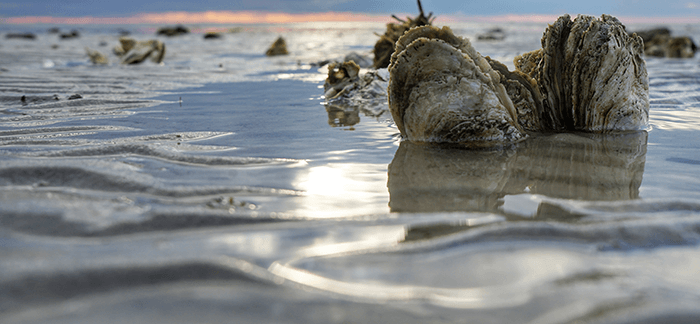In Hampton this week, a major new initiative is underway by the Chesapeake Bay Foundation to protect the city from climate change threats by building its largest living shoreline combined with oyster reefs.
As part of the "Roots to Reef" initiative, CBF staff and volunteers this week planted the first oyster castles as part of the living shoreline.
The Hampton River, stretching 3.2 miles long, has historically served as a hub for food, recreation, and national security. But with the dense surrounding population of approximately 138,000 residents living within a 51 square mile area, the river faces polluted runoff from streets, parking lots, and buildings.
Living shorelines offer an effective natural alternative to protecting shorelines from storms, erosion, and pollution when compared with traditional hardened structures like seawalls, which often fail over time. In addition, oysters filter algae, sediment, and other pollutants while oyster reefs provide habitat for fish, crabs, and other Bay organisms.
This resilient and natural approach to tidal shoreline protection made possible by the Blocker Foundation and Immaculate Conception Catholic Church in Hampton will involve the strategic placement of 5,584 oyster castles, 720 bushels of recycled oyster shells, 650 innovative Natrx Basalt Shell Bags, and 22 coconut fiber coir logs near the Pine Cone Harbour Condominiums along the densely populated Hampton River.
"This Roots to Reef initiative at Pine Cone Harbour creates a natural buffer and filtration system at the water's edge. We’re really connecting the dots here—the work we do on the land directly influences the health of the water, and vice versa” said Kati Grigsby, CBF’s Hampton Roads Urban Restoration Coordinator. “The end result is a more resilient and interconnected ecosystem along the urban Hampton River. Unlike hardened shoreline projects such as concrete sea walls, living shorelines are designed to evolve and migrate with rising sea levels.”
The Pine Cone Harbour Living Shoreline project marks a groundbreaking collaboration between CBF's Hampton Roads Oyster Team and its Urban Restoration Team. In an unprecedented effort, both teams are implementing restoration projects directly offshore from one another, creating an integrated approach using both living shorelines and oyster reefs to confront the threats of climate change.
Living shorelines strategically combine the planting of native wetland plants, grasses, shrubs, and trees along the tidal waterline along with materials including oyster reefs, coconut fiber coir logs, and basalt shell bags. While hardened structures may offer short-term stabilization, they cannot adapt to increased storm activity and sea-level rise in the same way living shorelines do. This exacerbates erosion in adjacent areas.
The hard work of dozens of volunteers has made this project possible so far, but the project needs more volunteers. Learn more about the project and find volunteer information.



